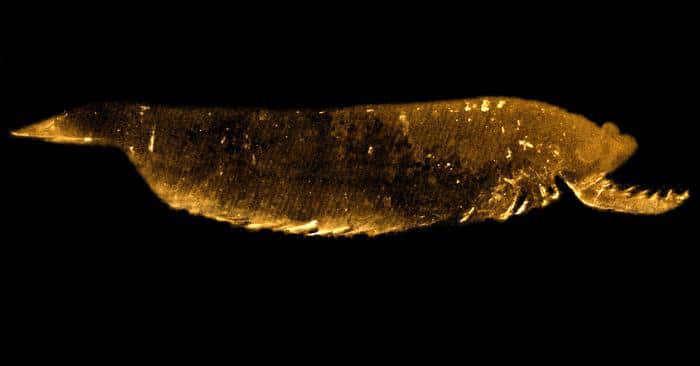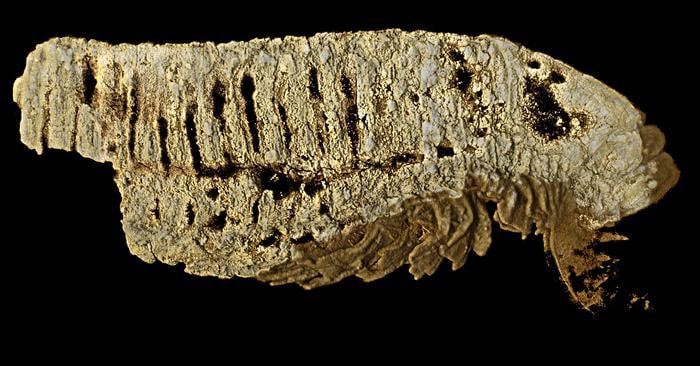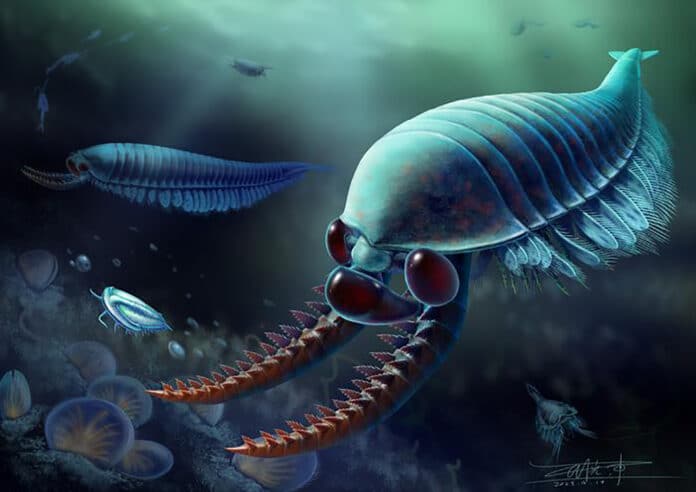Using advanced scanning technology, scientists from the University of Leicester and Yunnan Key Laboratory for Palaeobiology have reconstructed a ‘fossil monster’ that lived half a billion years ago. The reconstruction has redescribed a unique fossil animal from rocks nearly 520 million years old.
The study could fill the gap in understanding the evolution of arthropods.
Scientists used a CT scanner to image an animal named Kylinxia. The imaging revealed its soft anatomy buried in the rock. Its unusual characteristics include three eyes on the head and two terrifying limbs probably used to catch prey. It is around the size of a large shrimp.
The region near Chengjiang in southern China, where the Chinese team gathered the fossils for this study, is one of the primary sites for such fossils. The fossils were discovered in the Yunnan Province of China’s Cambrian Chengjiang biota, which has over 250 species of unusually well-preserved fossilized animals.
The discovery is crucial for understanding the development of arthropods. These are animals with segmented bodies, the majority of which have two jointed limbs, such as crabs, lobsters, insects, and spiders.
Despite the fact that there are many arthropods in the fossil record, most notably the trilobites, the bulk of them only have their rigid skeletons preserved. The scientists were able to image Kylinxia’s head, identifying six segments: the front one bearing eyes, the second with a pair of massive grabbing limbs, and the other four, each bearing a pair of jointed limbs. This was made possible by the novel Chinese material’s practically full preservation.

Lead author of the study, Robert O’Flynn, a Ph.D. student at the University of Leicester School of Geography, Geology and the Environment, said: “The preservation of the fossil animal is amazing. After CT scanning, we can digitally turn it around and stare into the face of something alive over 500 million years ago. As we spun the animal around, we could see that its head possesses six segments, just as in many living arthropods.”
Professor Mark Williams, Robert’s primary supervisor at the University of Leicester, said: “Kylinxia, and the Chengjiang biota whence it came, are instrumental to building our understanding of early euarthropod evolution. I like to think that Robert will continue making similar discoveries.”
Professor Yu Liu from the Yunnan Key Laboratory for Palaeobiology said: “Robert and I were examining the micro-CT data as part of his doctoral thesis to refine and correct previous interpretation of head structures in this genus, Kylinxia. Amazingly, we found that its head comprises six segments, as in, e.g., insects.”

Dr Greg Edgecombe from the Natural History Museum added: “Most of our theories on how the head of arthropods evolved were based on these early-branching species having fewer segments than living species. Discovering two previously undetected pairs of legs in Kylinxia suggests that living arthropods inherited a six-segmented head from an ancestor at least 518 million years ago.”
Journal Reference:
- Robert J. O’Flynn, Yu Liu, et al. The early Cambrian Kylinxia change and evolution of the arthropod head. Current Biology. DOI: 10.1016/j.cub.2023.08.022
